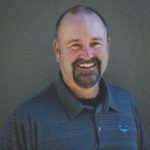

“Both MDO and HDO are high-grade hardwood or fully repaired fir face panels used for concrete forms or general purposes, like signage and cabinetry.”
- Jim Coshow
From exterior wall sheathing to cabinetry, plywood serves countless uses and is one of the most ubiquitous building materials, especially here in the Pacific Northwest. With so many uses and different types of plywood available, it’s important to know your options, understand the material, and pick the right product for your project.
For our Plywood Series, we’re joined by T.R. Cauthorn, Panel Sales Manager at Hampton Lumber, a leading sustainable lumber producer based in Washington and Oregon and one of Dunn Lumber’s long-standing suppliers. With nearly 30 years spent with Hampton Lumber, plus experience working in mills and forests with Georgia Pacific, T.R. is a plywood expert.
In today’s episode, T.R. outlines the key differences and advantages of two types of enhanced surface panels: medium density overlay (MDO) and high-density overlay (HDO).
Watch our discussion in the video above, or keep reading to get the highlights.
Enhanced panel types: MDO and HDO
Two common enhanced surface panels are medium density overlay (MDO) and high-density overlay (HDO). These high-grade hardwood or fully repaired fir face panels are most frequently available in half or three-quarter-inch thicknesses, but other thicknesses are available by special-order. Both MDO and HDO panels come in two grades, concrete form and general purpose. The general purpose grade will often be used for things like signage and smooth painting applications, such as garage cabinets and murals.
For the general-purpose category, both MDO and HDO can be manufactured in either a one-step or two-step process. One-step enhanced panels are manufactured by applying the overlay material to the plywood substrate in a single press cycle. Two-step enhanced panels are crafted by creating the plywood substrate, then sanding it to a glassy smooth finish before applying the overlay in a second press cycle. This two-step process results in a more refined surface, with minimal risk for telegraphing.
Best-in-class concrete forms
MDO and HDO in the concrete form grade perform significantly better than BBOES. With release agents already embedded in the paper, it allows you to get 10-15 pours if the panels are cleaned adequately afterwards. With BBOES, respraying the form panels is required after every use.
Want to learn more about plywood? Check out our installation best practices for plywood or our guide to the different grades of plywood veneer.


